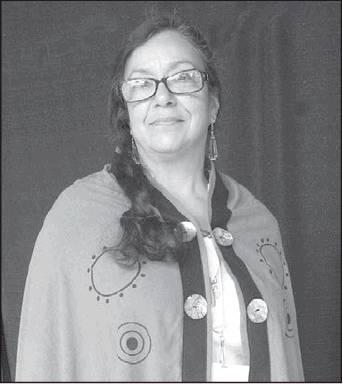TISHOMINGO, Okla. – Rena Smith has been making pucker toe moccasins for years but recently became interested in dyeing fabric with cochineal – a beetle from Central and South America whose crushed carcasses produce a reddish color.
It’s been used for centuries as a dye and it is believed early Chickasaws used it to dye or embellish fabric with ancient symbols sacred to the tribe.
Smith’s first foray into using beetles as dye came a few years ago on a silk noil cape. The raw fabric is slightly nubby with random flecks in a natural, off-white color. It has a somewhat rough texture but with a gentle drape.
The Chickasaw artist and craftswoman who hails from Scappoose, Oregon, a town of approximately 7,000 just north of Portland, decided the cape was “too rough,” and after repeated hand-washings, she achieved the desired texture. The washings made the garment smoother overall, but allowed for natural “pilling” indicative of silk noil.
“The bug carcasses were used to dye the British Army red coats during the Revolutionary War,” Smith said. “It is unlike natural dyes. I worked the cochineal until I had a color I liked. I didn’t want to ruin the color I had. I would have experimented further, but I liked the magenta hue and decided to use it,” she added.
Dyeing the garment took an entire day. She added black piping to the borders, ironed the garment and finished the edges. Then, she started applying hand-painted Southeastern Native American symbols on it. “I know ancient Chickasaw men wore capes and it stands to reason women did as well,” Smith said while manning a booth at the 2019 Southeastern Art Show and Market (SEASAM).
She may reside in Oregon, but Smith is an annual fixture at the Artesian Arts Festival and SEASAM, and provides pucker toe moccasins to the Chickasaw Nation for display at several sites illustrating tribal culture.
In Oregon, she shows schoolchildren the Chickasaw tradition of making cornhusk dolls and explains the tribe’s ancient tradition of wearing pucker toe footwear, ideal for woodland tribes traveling, hunting and gathering on the forest floor.

